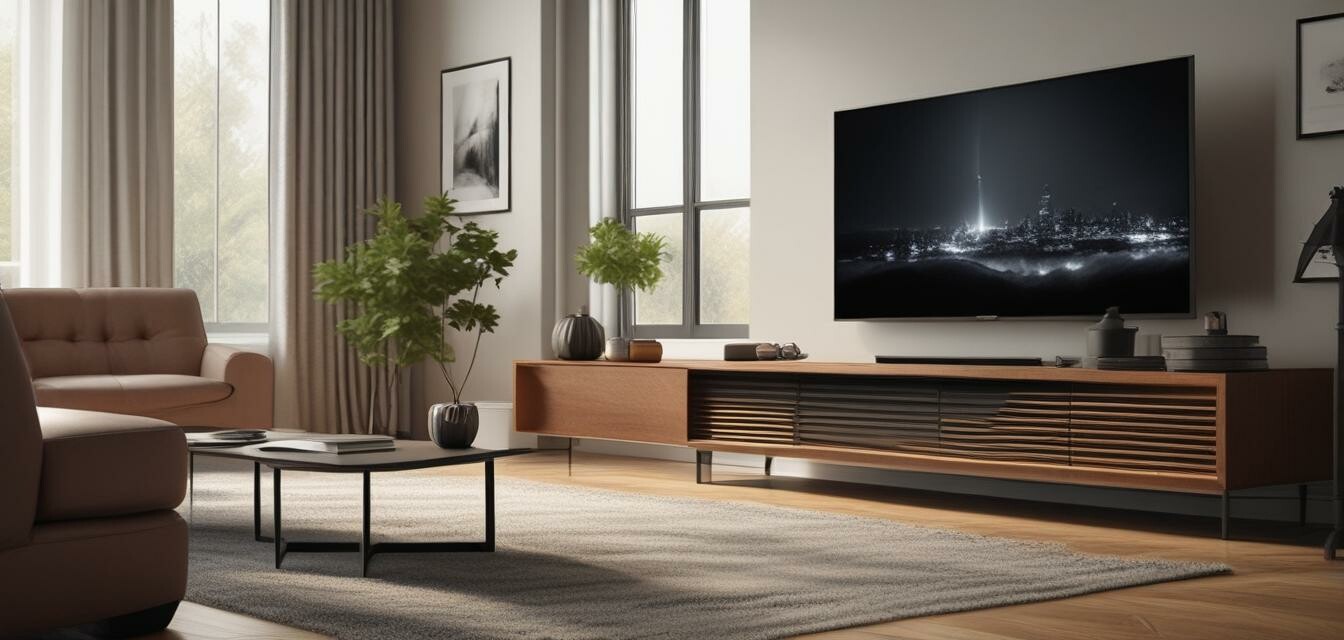
How to place your soundbar for optimal sound
Key Takeaways
- Position your soundbar at ear level for the best audio experience.
- Placement options include above, below, or around the TV.
- Make use of wall mounts or stands for proper alignment.
- Ensure there are no obstructions between the soundbar and your seating area.
- Adjust settings for room acoustics to further enhance sound quality.
Setting up your soundbar properly can have a significant impact on your audio experience. By knowing where to place it, you can ensure that you're getting the best sound possible. In this guide, we’ll help you learn how to position your soundbar for optimal sound quality.
Understanding soundbar placement
The placement of your soundbar affects sound dispersion and clarity. A properly placed soundbar can fill the room with rich audio, while poor positioning can lead to muffled or imbalanced sound.
Ideal soundbar positioning options
| Placement | Advantages | Disadvantages |
|---|---|---|
| Below the TV | Most common placement; aligns with ear level. | Can block TV remotes if too close. |
| Above the TV | Great for achieving a surround sound effect. | Sound may dissipate upwards; not ideal for smaller rooms. |
| Wall-mounted | Cleans up space; allows for optimized projection of sound. | May require additional purchase of mounting hardware. |
| On a TV stand | Easily accessible for adjustments and cable management. | Can accumulate dust; less aesthetically pleasing. |
Optimal height for soundbars
Your soundbar should ideally be positioned at ear level when you are seated. This height ensures that the sound comes from the same direction as the picture on your TV, creating a more immersive experience.
Recommended height
- Between 15 to 30 inches off the ground, depending on your seating.
- Avoid placing too low or too high, as it can distort sound.
Consider room acoustics
The layout and materials in your room also play a crucial role in sound quality. Here’s how to adjust for room acoustics:
- Soft furnishings like curtains and carpets absorb sound, reducing echoes.
- Hard surfaces can bounce sound around, causing distortion.
- Experiment with placement near walls or corners to amplify bass.
Common mistakes to avoid
- Blocking the soundbar: Ensure that furniture or decor do not obstruct the sound pathway.
- Incorrect angle: Position the soundbar facing directly towards your main seating area.
- Neglecting settings: Adjust the soundbar settings to match your room’s acoustics.
Tips for beginners
- Begin with a central position for balance.
- Test different placements before permanently mounting.
- Check for wireless connectivity issues if using a wireless soundbar.
Testing your setup
Once you've positioned your soundbar, it's vital to test the audio. Play a variety of content to evaluate how well the setup performs across different sound types:
- Action scenes for dynamic range.
- Dialogue-heavy shows for clarity.
- Music for overall fidelity.
Conclusion
By following these guidelines, you can successfully position your soundbar for optimal sound. Remember that experimentation is key; don't hesitate to tweak placements until you find the perfect spot. For further insights into enhancing your audio experience, check out our Buying Guides and explore our selection of Wireless Soundbars.
Pros
- Enhanced audio experience
- Easier setup and fewer cables
- Improved aesthetics if wall-mounted
Cons
- May require additional purchases for mounting
- Placement may vary depending on room layout